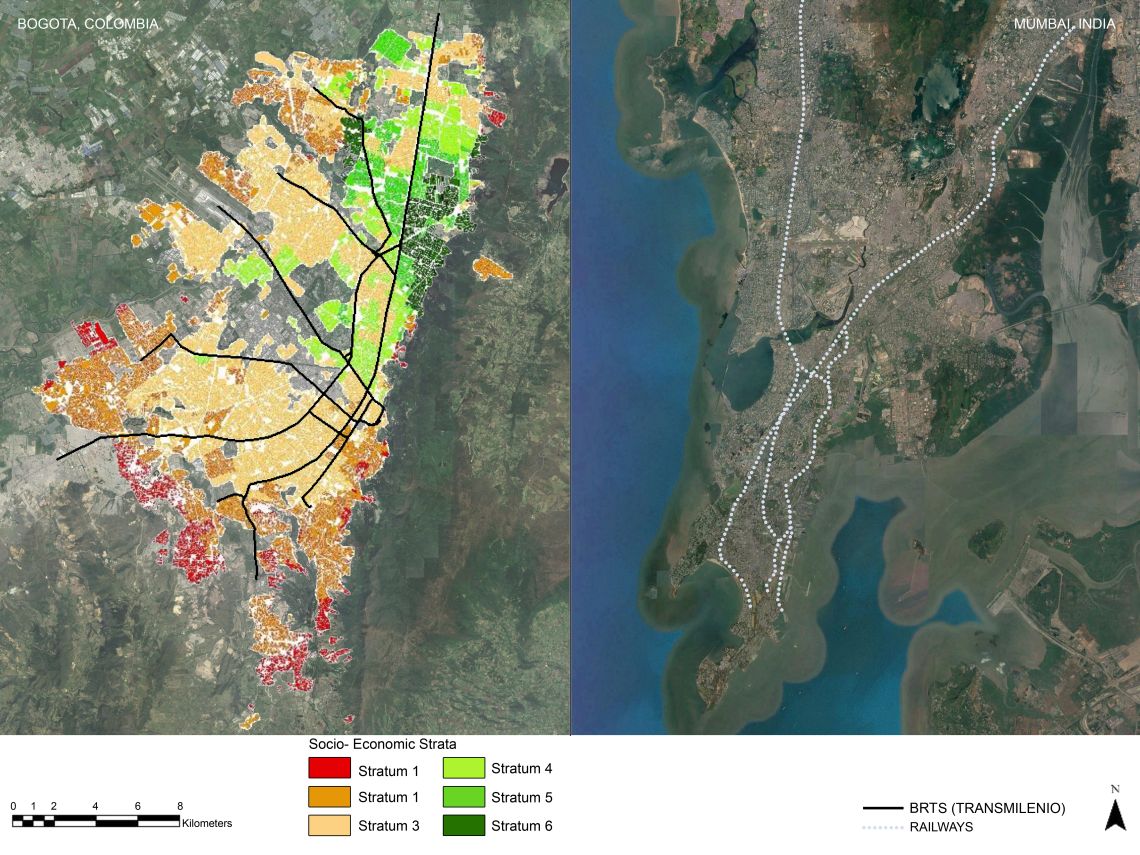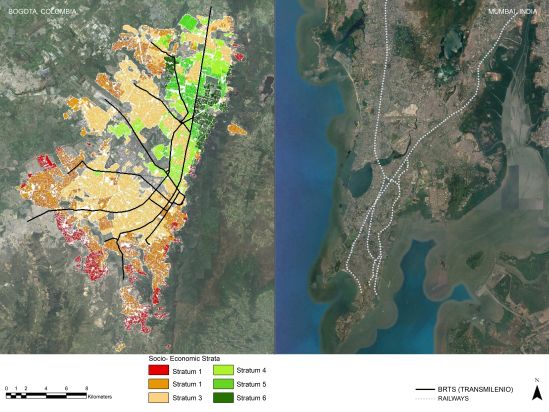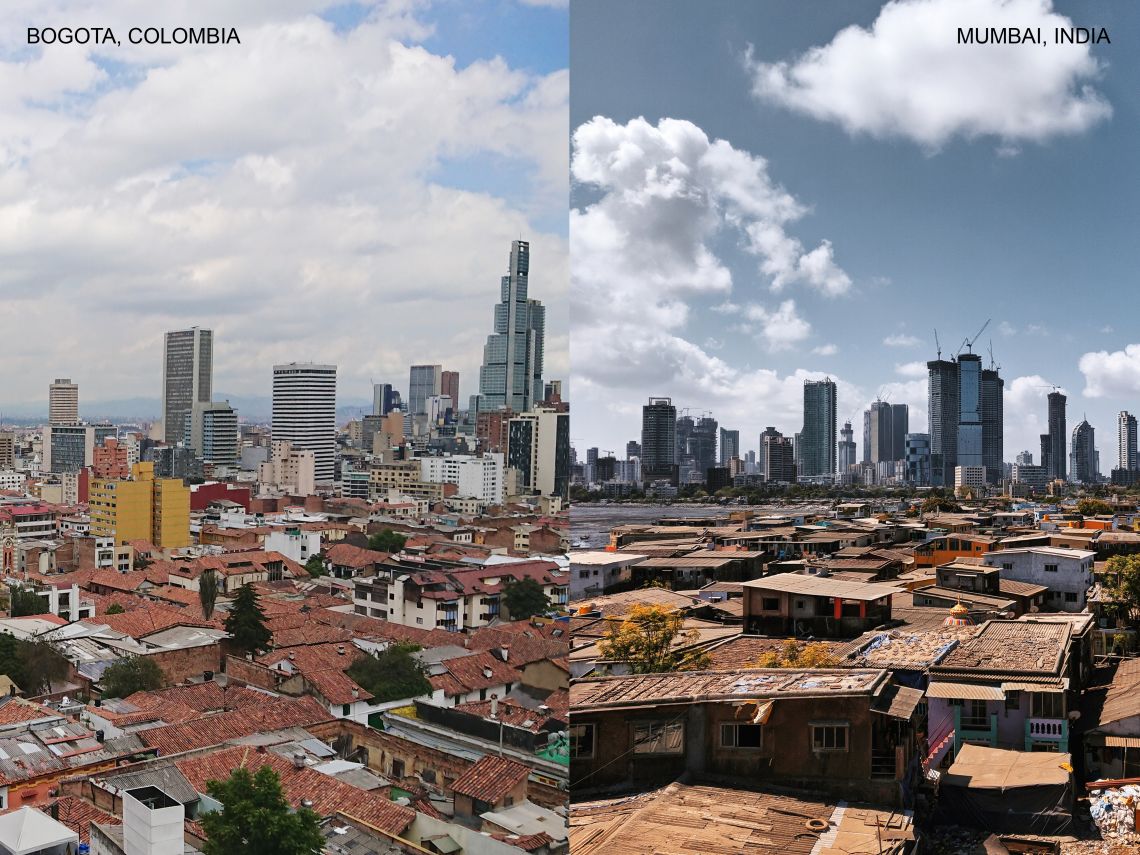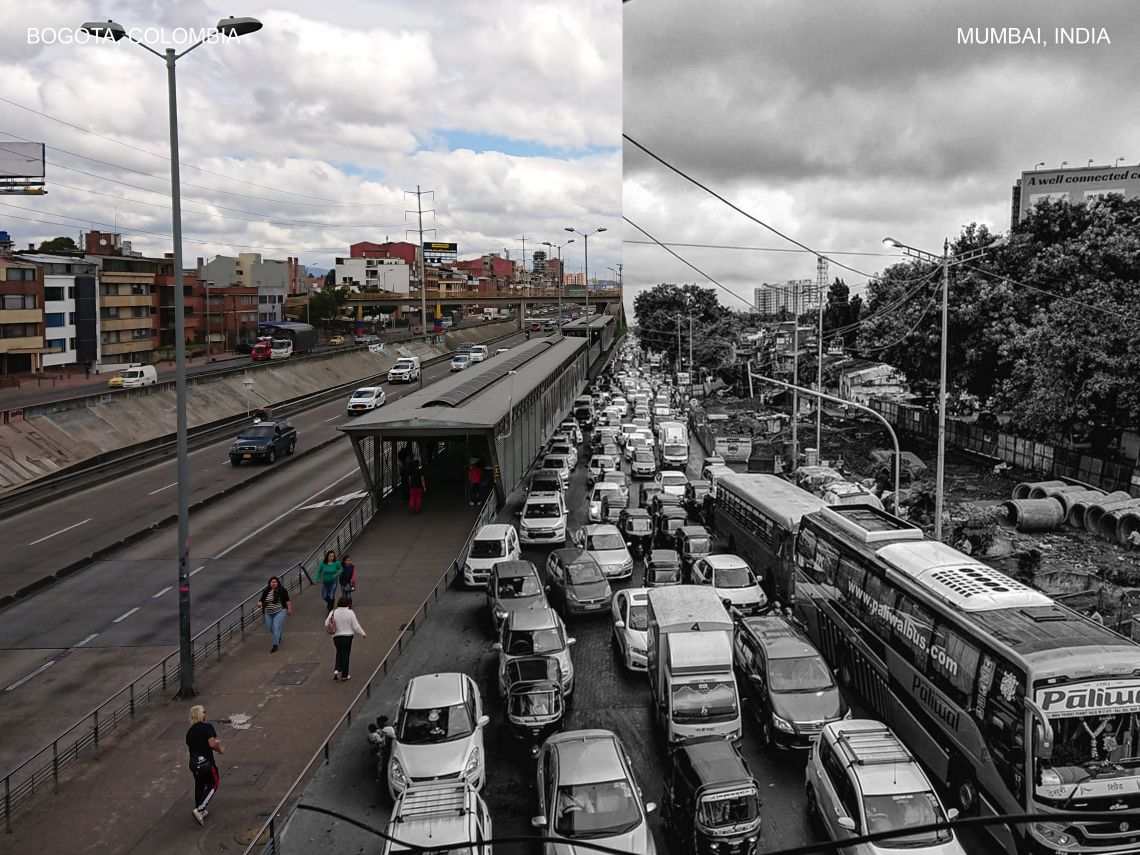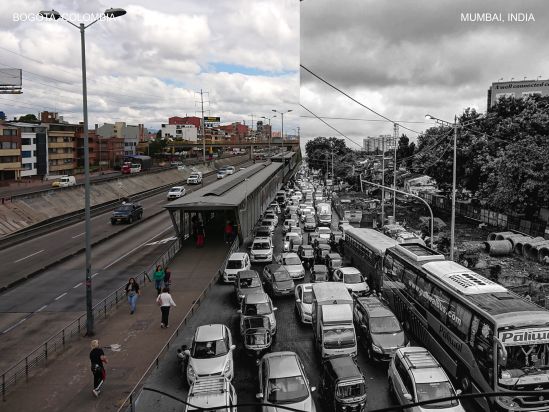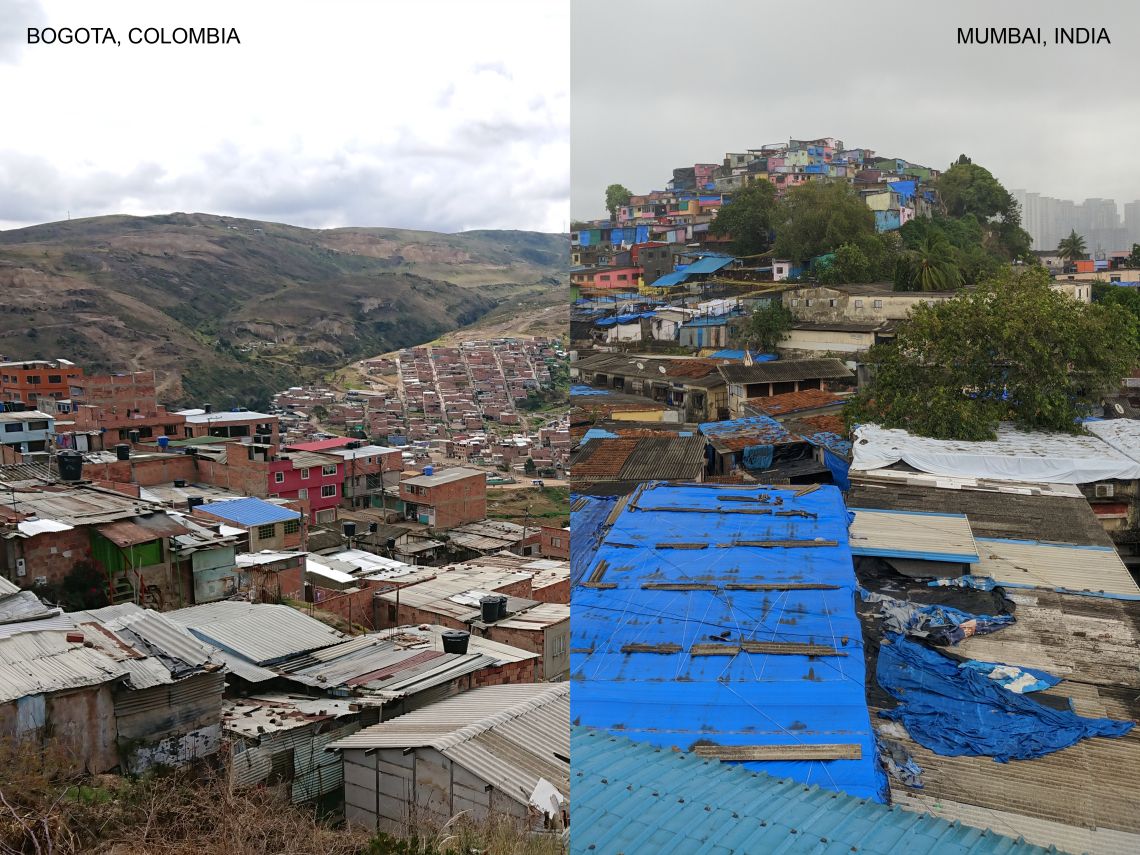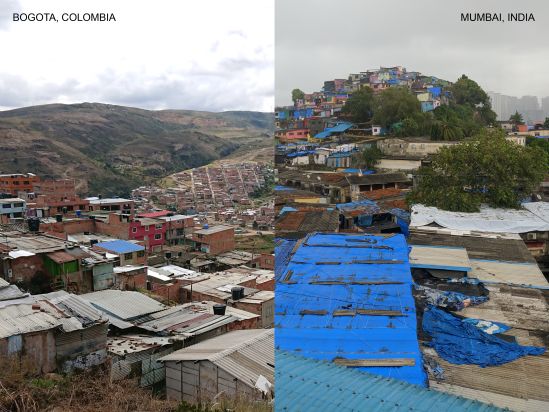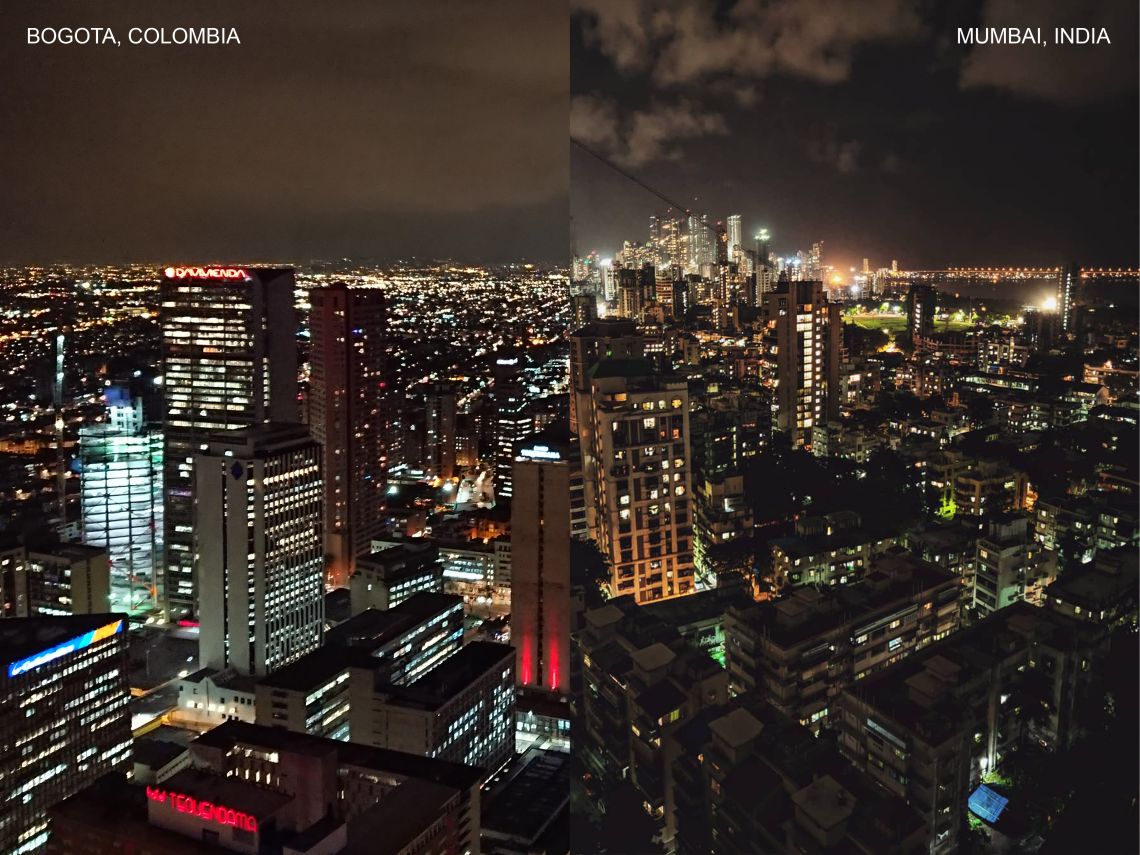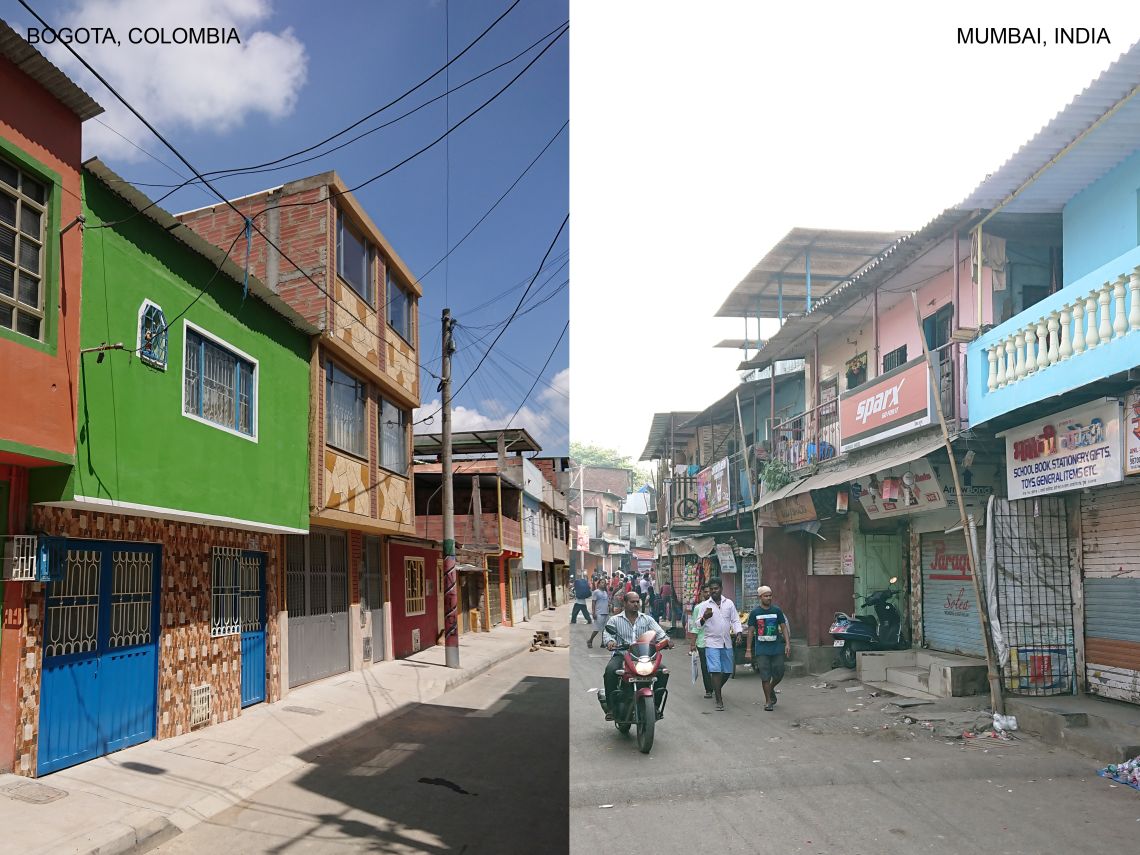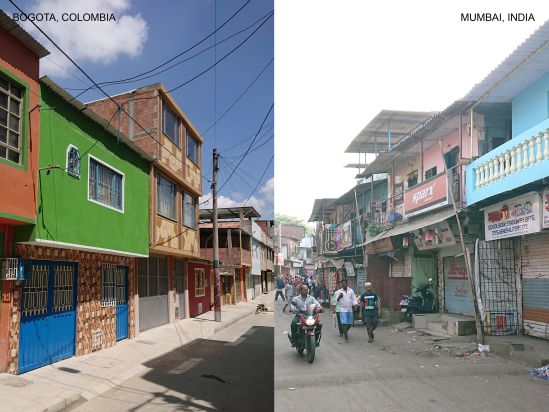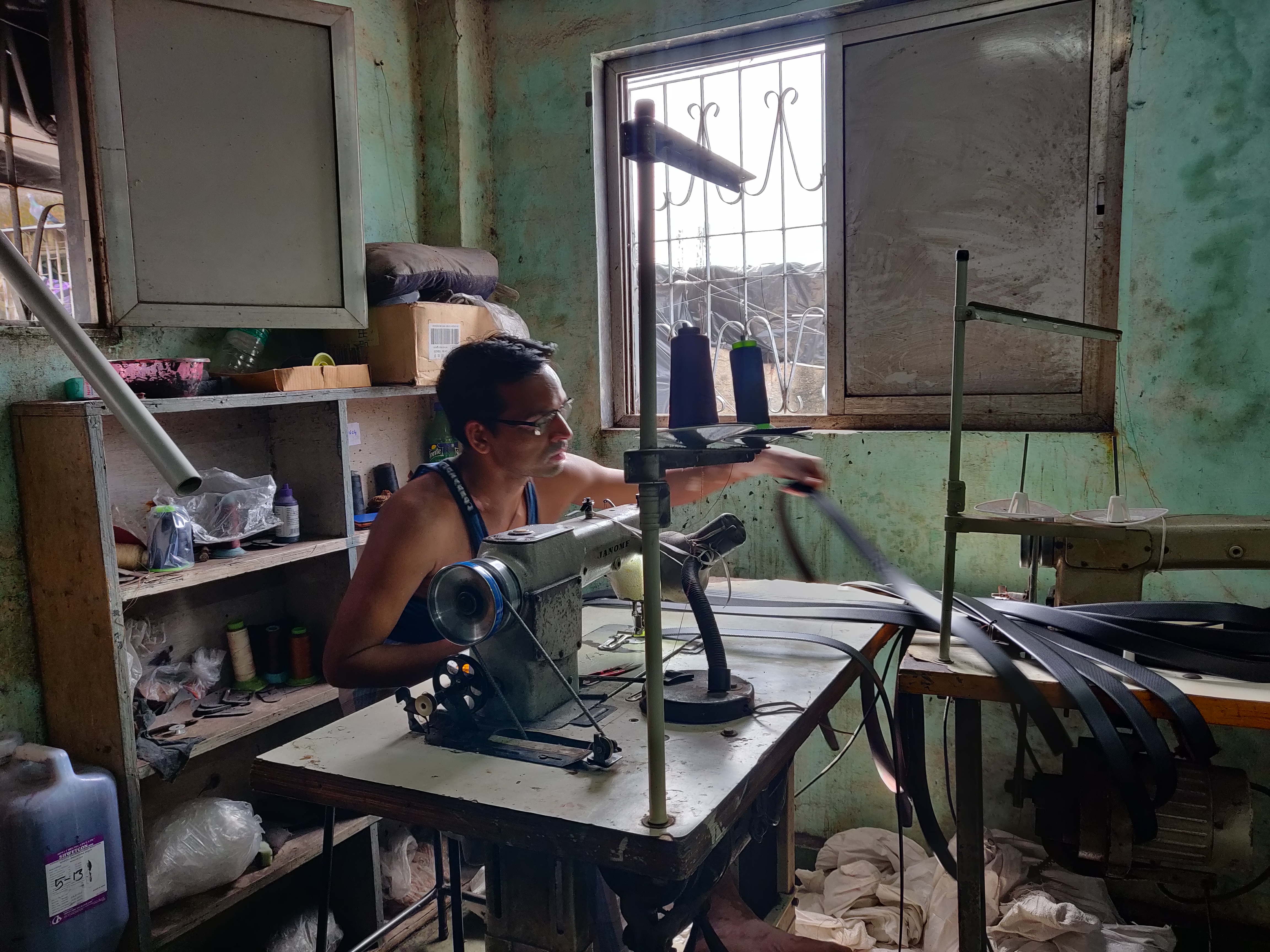Let's talk Similar(C)ities!

Let's talk Similar(C)ities!
Imagine this, it is early in the morning and you are commuting to your place of work. As you walk down one of the busiest streets in the city, you are hit by the whiff of deep fried snacks, as a friendly voice calls out to you to try the delicious breakfast. Several hawkers line the street outside your building offering a variety of fast foods, newspapers and magazines, fresh flowers and fruits. Music that reminds you of your childhood plays in one of the shops, overlapping with the music that is blaring in your earphones; a moment of juxtaposed melodies, filling you with nostalgia as you worry about the day’s work.
You get to the closest station and hop onto the public transport system like the countless other people. Someone is giving a musical performance on the bus, how nice, you think. They then make their way through the crowded aisles, commuter to commuter, collecting money. You get off at your stop and begin the walk to work making one last halt to grab a quick bite and exchange greetings with the owner of your favourite coffee shop. Mahindra SUVs and pickup trucks line the parking outside your office, you look longingly at the latest TVS Apaches and Bajaj Pulsars. This was my experience walking down the streets of Bogotá, the capital of Colombia. If you imagined an Indian city, well, you aren’t the only one.
I was fortunate enough to be a part of the urbz network through my internship with them in Mumbai. It was here that I was exposed to the concept of user-generated neighbourhoods. While the name sounded new, the concept wasn’t. It refers to housing and other infrastructure built by the users - community members themselves. The “informal” settlements of Dharavi or Asalpha, in Mumbai are examples of user-generated neighbourhoods.
Also, it was during my internship that I met Andres Sanchez of urbz Bogotá. At the time, Andrés was a professor at the Universidad de Piloto in Bogotá and also the main force behind the urbz office and projects there. I was fascinated with the practices and processes followed and wanted to get a first hand experience by participating in them. My days in Bogotá saw me visiting Andrés on the University campus. This is where he operated from. He was also a part of the university’s social projects department and found a way to juggle both responsibilities. A couple of students from the university and a couple more from another university worked as interns with him. The city, being the capital of the country, boasts of some of the largest universities in the region.
There is a vibrant student culture with many of these university and college buildings built right into the fabric of the city. Having been born and raised in Mumbai, combined with the experience of work and student life in Bogotá, naturally led me to compare the two cities; their multiple similarities and not so many differences.
Located on a significant height above sea level, Bogotá experiences a pleasant climate throughout the year. During the month of January and February when I was visiting, mornings are very cold: 9-13 deg C, and as the day progresses, it gets warmer till the afternoon with a maximum temperature of 29-31 deg C. On the same day, it might start raining towards the early evening, cooling down the city again.
It rains almost every day, so people seldom walk out of their homes without umbrellas or raincoats. The city is located along the slope of a mountain range providing efficient drainage during heavy rains. A majority of the people find it comfortable to commute on foot or on cycle and a significant portion of the population uses public transport.
The weather has a direct effect on the type of architecture of the city as well. The houses and offices are built to respond to this context. For instance, none of the houses/apartments have ceiling fans, as it is breezy and pleasant throughout the day, therefore the height of the ceilings is much lower (2-2.5m), than that observed in warmer cities of India.
Though some of the most famous architects of the country have worked with bricks as a material for construction; even buildings as tall as 15-20 floors have exposed brick architecture, most of the new construction consists of glass curtain walls on the façade. Glass facades behave as great insulators trapping heat during the day and keeping the occupants warm. Hence, this kind of façade complements the weather of Bogotá really well. At no point of time during the day did I find myself being uncomfortable due to the lack of air conditioning. The architecture of the city combines modernist building materials with the climate, culture and context of Bogotá, creating an architectural language that works well for the city. In other words, a combination of what Indian cities such as Mumbai aspire to be and what they could be.
Much like North American cities, Bogotá has a block layout for the organization of neighborhoods. There is a distinct downtown where most of the commercial high rises are situated. The rest of the city is humble, with low rise low density structures accommodating the housing and economic needs. Calle and Carrera streets run along the east-west and north-south directions respectively. The two streets are perpendicular to each other forming the spines of the city grid. One of the most notable features of this city network is that on Sundays, one of the main streets leading to the city center (Carrera 7) is completely cordoned off for pedestrians only. No vehicles are allowed on this street and it hosts several local food vendors and talented performers throughout the day. This street leads to the Bolivar Square right in the middle of the city.
There is a mass public transport system called the TransMilenio, a Bus Rapid Transport System, that consists of several dedicated routes on which the network operates. It helps the growing population of Bogotá reach its place of employment from its place of residence.
The government had come up with an economic policy to tackle the issue of urban poverty in the city which I found rather interesting and unheard of. The city has been divided into various socioeconomic stratas from 1-6 based on the economic conditions of the resident population. Level 1 being the poorest and Level 6 being the richest and most expensive with few residents claiming that it goes on to Level 7 or 8 in some places! This kind of stratification was introduced to help the poor sections of society. Level 1 neighborhoods receive heavy subsidies as compared to level 6 neighborhoods. Other taxes like property tax, tax on everyday consumer goods, is subsidised too.
In many cases, the people have been able to earn enough in order to relocate from lower to higher levels, such as level 3 to 4. However, they prefer to stay in the lower level as the scope for savings is higher there. Sounds familiar? This is much like the “informal” settlements in Mumbai, where people prefer staying in the “poorer” parts of the city even though they can afford to move out to “formal” accommodation owing to their existing networks, economic activities and better prospects for saving money. Also, if people do move out, they lease their old accommodation/shops to others and purchase more such places to lease and earn rent from . The government has tried to implement social housing schemes such as the ones in a neighborhood called Bosa. I visited this housing complex along with a few architecture students from the University. The residents were shifted here from various informal settlements nearby. The security guards and other managers of the complex are appointed by the residents and belong to the same community.
Houses in the emerging neighborhoods of the city, the outskirts and the periphery, are built by migrants (user-generated). They do not have proper support infrastructure such as roads, public transport, etc. Similar to neighborhoods in Mumbai, they receive electricity and water supply after much dialogue with the government bodies. However, unlike the illegality of user-generated settlements in Mumbai, the user-generated neighbourhoods of Bogota receive full tenureship for the land they reside on. As a result, they do not live with the fear of eviction. This security motivates residents to take complete responsibility for their neighborhood including its cleanliness and sanitation. I found that this sense of ownership allowed the residents to be actively involved in participatory events organised by several government agencies.
Though Bogotá doesn’t possess the same demographic diversity as that of Mumbai - owing to our many religions, castes, cultures, languages, food and status as an economic hub - there is a lot that both our cities could learn from each other through exchange of knowledge and experience. While Mumbai seems to be struggling to build and maintain a “world-class” identity, Bogotá is at home with its ancient past, colonial heritage and contemporary identity. Both India and Colombia have shared histories of colonisation and people’s initiatives in the development of communities, neighbourhoods, and cities. The people of Bogotá are very vocal about their rights and don’t hesitate to agitate if the need arises. People’s participation is embedded in their culture and for many, a way of life. By choosing to acknowledge this, Bogotá has emerged as a robust and convivial city. Imagine if Mumbai did the same.
